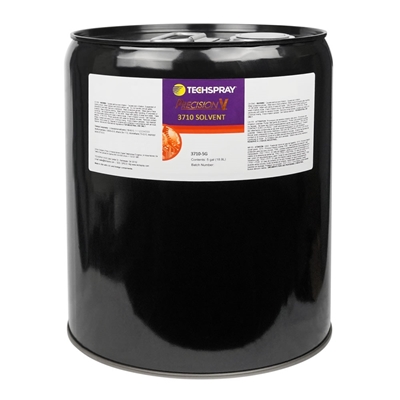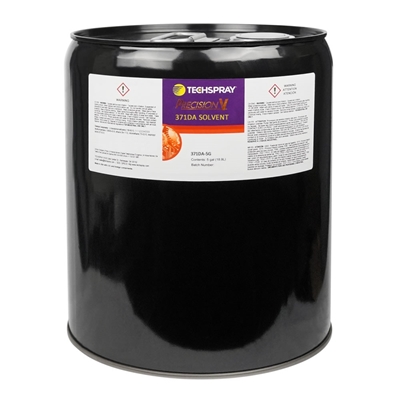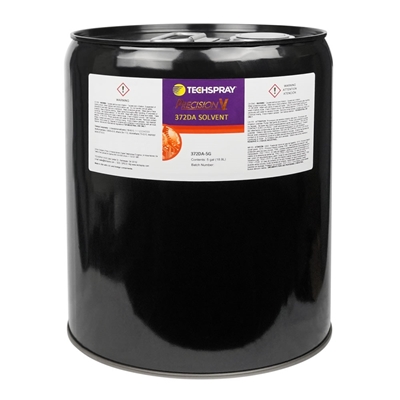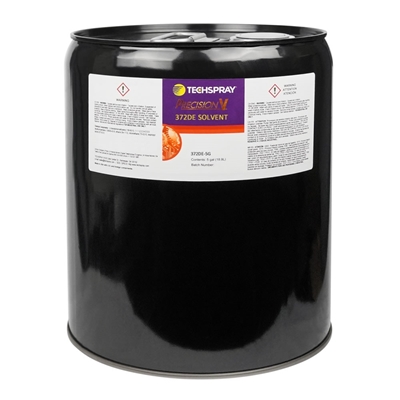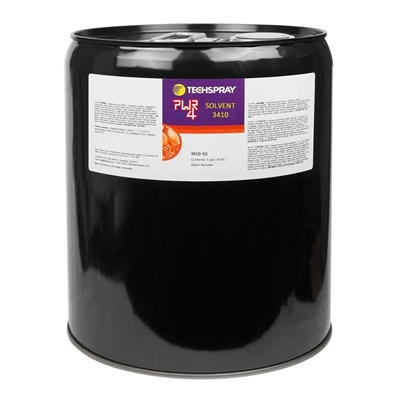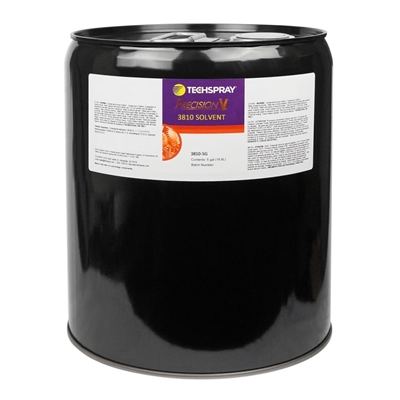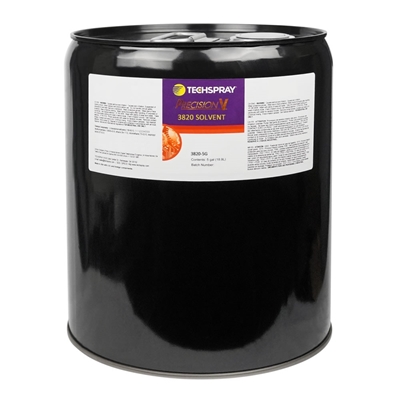On December 20, 2022, 3M announced their plans to phase-out their Novec PFAS-based product lines by the end of 2025:
“3M today announced it plans to exit per- and polyfluoroalkyl substance (PFAS) manufacturing and work to discontinue use of PFAS in its product portfolio by the end of 2025. This portfolio decision is based on careful consideration and a thorough evaluation of the external landscape, including multiple factors such as accelerating regulatory trends focused on reducing or eliminating the presence of PFAS in the environment and changing stakeholder expectations.”[1]
At Techspray, our focus is on high-precision cleaning chemistries, which include immediate chemical replacements for NOVEC and proprietary formulas. Those will be the products discussed in this article. As included as an appendix to the Novec phase-out announcement, the following products were listed as part of the future discontinuations:
Liquid Cleaning Products
- 3M™ Novec™ 7100 Engineered Fluid
- 3M Novec 71DA Engineered Fluid
- 3M Novec 71DE Engineered Fluid
- 3M Novec 71IPA Engineered Fluid
- 3M Novec 7200 Engineered Fluid
- 3M Novec 72DA Engineered Fluid
- 3M Novec 72DE Engineered Fluid
Aerosol Cleaning Products
- 3M Novec Contact Cleaner Plus
- 3M Novec Electronic Degreaser
- 3M Novec Flux Remover
What Are PFAS, and Why Are They a Problem?
Polyfluoroalkyl (and perfluoroalkyl) Substances (PFAS) are a class of chemicals used in a wide variety of applications, including high precision cleaning for industries like aerospace and medical device manufacturing. Environmental agencies, including the US Environmental Protection Agency (EPA), have been focused on PFAS because some of them tend to break down very slowly, and accumulate in the environment, animals and even people over time.[2] That’s why they have been nicknamed “forever chemicals” in popular media.
Of course, the EPA’s concern goes far beyond industrial cleaning solvents. PFAS can also be found in fertilizer, fire extinguishing foam, food packaging, carpeting, and even personal care products. [2]
Some studies have shown that a high level of exposure to PFAS can lead to a variety of negative health effects, like decreased fertility, developmental delays in children, reduced immune response, and increased risk of cancers.[2]
EPA Administrator, Michael Regan, formed the EPA Council on PFAS in early 2021. The EPA Council created a PFAS Strategic Roadmap to act as an aggressive plan to handle the risks from PFAS as effectively as possible.[3]
PFAS are so widely used, and in such a variety of industries and applications, that one unified approach is not possible. With that in mind, the EPA’s approach centers on these principles:
- “Consider the Lifecycle of PFAS”
- “Get Upstream of the Problem”
- “Hold Polluters Accountable”
- “Ensure Science-Based Decision-Making”
- “Prioritize Protection of Disadvantaged Communities” [3]
Because of the prevalence of PFAS, the EPA isn’t proposing a sweeping ban, as was done with ozone-depleting chemicals in the Montreal Protocol. The goal rather is to “pursue a comprehensive approach to proactively prevent PFAS from entering air, land, and water at levels that can adversely impact human health and the environment.”[3]
Time will tell, but most likely some PFAS chemicals and applications will be deemed innately harmful and difficult to control. For example, it is reasonable to expect increased restrictions on aerosol use, because aerosolized chemicals in the air are inherently difficult to control. In contrast, a modern well-maintained vapor degreaser can do a great job controlling emissions.
At this point, the EPA has not provided many specifics on what is to come. If history is any guide, the EPA will tightly restrict or ban some applications when viable alternatives exist (e.g., when flammable hydrocarbon-based solvents can be safely used), and provide exemptions when alternatives aren’t readily available (e.g. safe nonflammable aerosol cleaner), or protocols when an application has adequate controls (e.g. vapor degreasing).
Why Is 3M Discontinuing 3M Novec Solvents?
Since I am not a part of 3M, all I can do is take 3M’s official statement at face value in context of what has happened in the past year: “…accelerating regulatory trends focused on reducing or eliminating the presence of PFAS in the environment…”[1]
3M has manufactured many of their PFAS in Belgium facilities. In early 2022, 3M found itself in the middle of a pollution scandal, as reported in The Brussels Times:
“Flemish Environment Minister Zuhal Demir announced on Tuesday that the appeal of multinational 3M against the decision to tighten the discharge standards of their Zwijndrecht plant has been rejected, resulting in the government cracking down on nine types of PFAS, synthetic chemicals dangerous to people’s health.”[4]
This issue has led to supply chain shortages in Novec solvents across the globe, and escalating prices on the remaining material that can be procured. Companies in the aerospace, medical device manufacturing, and other mission-critical industries were left to scramble to find short-term supply any way they could, and to qualify replacement solvents. This has been going on nonstop leading up to the 3M announcement, so it most likely has some kind of causal relationship.
With a 2025 Phase-Out, Why Replace 3M Novec Now?
As mentioned above, there has been a global shortage of 3M Novec solvents throughout most of 2022 because of issues with several of their facilities. With the latest announcement, there is no reason to assume the situation will improve.
On top of that, it is clear in 3M’s announcement that stockpiling will be discouraged: “3M will manage customer last time buy requests based on availability of supply, and we will work with customers to determine specific needs and put in place an action plan to help ensure an orderly transition. 3M does not currently anticipate stockpiling these products.”
End-users that want to maintain control of their supply of high precision solvents for their critical cleaning needs should start the process of identifying and qualifying replacements as soon as possible. The alternative would be operating at the whims of global demand on a very restricted supply.
What Is Vapor Degreasing?
Vapor degreasing is the cleaning process which involves condensing solvents vapors on the object that is being cleaned. The process doesn’t require any water or scrubbing. Instead, the vapor-degreasing machine uses solvent vapors to cleanse and remove contaminants from parts. This process is used to clean various materials during the manufacturing process such as plastic, glass, metal, gold, and ceramic.
In its most basic configuration, a vapor degreaser contains two tanks that are called sumps, a metal basket, and bands of cooling coils. The first sump boils the solvent (boil sump) and the second sump (rinse sump) collects the solvent distillate.
As a secondary cleaning method, the parts may be dipped into a boil sump, then agitated with high-frequency, ultrasonic for additional agitation.
In almost any industry where precision cleaning is paramount to the manufactured parts, vapor degreasing can be found. It is common in the automotive, aviation and aerospace, medical device manufacturing, jewelry manufacturing, and in electronic assembly industries.
The clear benefits of vapor degreasing are superior cleaning results, repeatability, and lack of dependency on operator techniques and manual cleaning methods. The use of vaporized solvent avoids cross-contamination, which is a problem with cleaning methods that reuse either solvents or cleaning solutions from part-to-part. The use of solvents enables objects to dry quickly without a secondary drying process.
Although vapor degreaser solvents are generally expensive compared to other cleaning materials, they are continuously recycled in the closed-loop process, which can make it an economic method of cleaning over time.
Can 3M Novec Solvents be Replaced?
Yes, alternatives do exist for 3M Novec solvents, and Techspray has a number of options to fit various application requirements. In the Novec product line, 3M has offered a number of azeotrope and near-azeotrope solvent blends that offer advantages. Techspray has a large variety of solvents for vapor degreasing under the brand names PWR-4™ and Precision-V™. For replacing 3M Novec solvents, we have some equivalent chemical crosses and additional options that fit the same criteria, but at a higher cleaning performance.
How Do I Identify and Qualify a 3M Novec Replacement?
For a step-by-step guide to qualifying 3M replacements, see our article “7 Tips for Qualifying 3M Novec Replacement Vapor Degreaser Solvents”. In it, we break down the following tips:
- Don’t limit your search to an exact cross.
- Understand the criteria that is most critical to your application.
- Don’t get too deep into the chemistries.
- Define your cleanliness requirement.
- Be ready to explain your process.
- Flexibility in your process can provide better results.
- Ask your suppliers for help.
The temptation is to narrow your search to exact chemical replacements, which might be required in the short term because of the long timeline for a full qualification process. In the long term, it is best to open a dialog with your chemical supplier and discuss your requirement and cleaning process. It is quite possible better options are available.
For vapor degreasing, it’s important that a solvent is an azeotrope or as close to an azeotrope as possible, meaning that all the solvent constituents boil at around the same temperature. This ensures the formulation does not change as the solvent is vaporized and reconstituted hundreds of times in the closed-loop cycle.
An azeotrope (as used in the cleaning world) is a mixture of two or more liquids whose chemistries are exactly the same in both vapor and liquid phases. There are properties of any azeotrope which are unique. For example, a binary solvent blend contains two solvents, each with its own boiling point. When one combines these two solvents in a precise manner, the resulting product exhibits a boiling point different than either of the individual components and it maintains that boiling point throughout the process. It acts as a single component product.
Near-azeotropes, on the other hand, will fractionate (split) the two ingredients to a small degree as they boil. Although stable once equalized, the composition of the vapor and liquid phases are not exactly the same. One phase will be skewed greater with one component while the other phase will be greater in the second component. Due to this, there may be small differences in cleaning performance between the liquid and vapor phases.
As you research 3M Novec alternatives, pay close attention to toxicity. Chemicals like TCE (Trichloroethylene, CAS #79-01-6), nPB (n-Propyl Bromide, CAS #106-94-5), and Perc (Perchloroethylene, CAS #127-18-4) are commonly used in vapor degreasing, have great cleaning performance, but have very toxic side-effects (e.g. reproductive effects, carcinogens, organ failure, loss of cognitive functioning). Avoid spending time and money to qualify a replacement solvent cleaner just to have it restricted by OSHA or the EPA in the future. For more information, check out our article “Safety Guide for Proper Handling of 1-Bromopropane (nPB) & Other Toxic Solvents”.
Techspray Has the Novec Replacements You Need
Techspray has a large variety of solvents intended for vapor degreasing under the brand names PWR-4™ and Precision-V™. For replacing 3M Novec solvents, we have some equivalent chemical crosses and options that fit the same criteria, but at a higher cleaning performance.
These products are engineered to be less toxic than many other solvents commonly used in vapor-degreasers: e.g., TCE (Trichloroethylene, CAS #79-01-6), nPB (n-Propyl Bromide, CAS #106-94-5), and Perc (Perchloroethylene, CAS #127-18-4).
As an innovative chemical blender, our goal is to provide our customers safer and more environmentally-preferred alternatives to chemicals with high global warming potential (GWP) or ‘forever chemicals’’. We also diligently comply with all regulations, actively monitor emerging regulations across industries we support, and manufacture through strict controls regarding proper use and disposal of all materials.
Techspray’s TechLab offers state-of-the-art cleaning, coating and analytical services to help customers qualify new products and optimize their processes. Cleaning equipment includes inline, batch, ultrasonic, and vapor degreasing systems. This equipment allows us to better duplicate your production environment for process optimization and troubleshooting.
Contact Techspray at 678-819-1408 or info@itwcce.com for free TechLab qualification testing. We are available to help qualify new cleaning processes, evaluate current processes, or troubleshoot contamination issues.
About the author: Dr. Saroj Yadav is Marketing Director for Techspray, and previously Director of Product Technology. She has a PhD in Organic Chemistry from Louisiana State University, and has been published in several chemistry journals including Tetrahedron and The Journal of Organic Chemistry.
References
[1] 3M Announcement Letter, Dec. 20, 2022, David N. Schneider, VP Chemicals and Semiconductor, 3M Company, Electronics Materials Solution Division.
[2] “Our Current Understanding of the Human Health and Environmental Risks of PFAS”, EPA, https://www.epa.gov/pfas/our-current-understanding-human-health-and-environmental-risks-pfas (accessed 1/4/23).
[3] “PFAS Strategic Roadmap: EPA's Commitments to Action 2021-2024”, EPA, https://www.epa.gov/pfas/pfas-strategic-roadmap-epas-commitments-action-2021-2024 (accessed 1/4/23).
[4] The Brussels Times, by Lauren Walker, 8 March 2022, “Belgium rejects 3M appeal and tightens regulations on hazardous chemicals”. https://www.brusselstimes.com/209902/belgium-rejects-3m-appeal-further-tightens-standards-regarding-hazardous-pfas
[5] “7 Tips for Qualifying 3M Novec Replacement Vapor Degreaser Solvents”, Techspray, https://www.techspray.com/7-tips-for-qualifying-3m-novec-replacement-vapor-degreaser-solvents (accessed 1/4/23)


